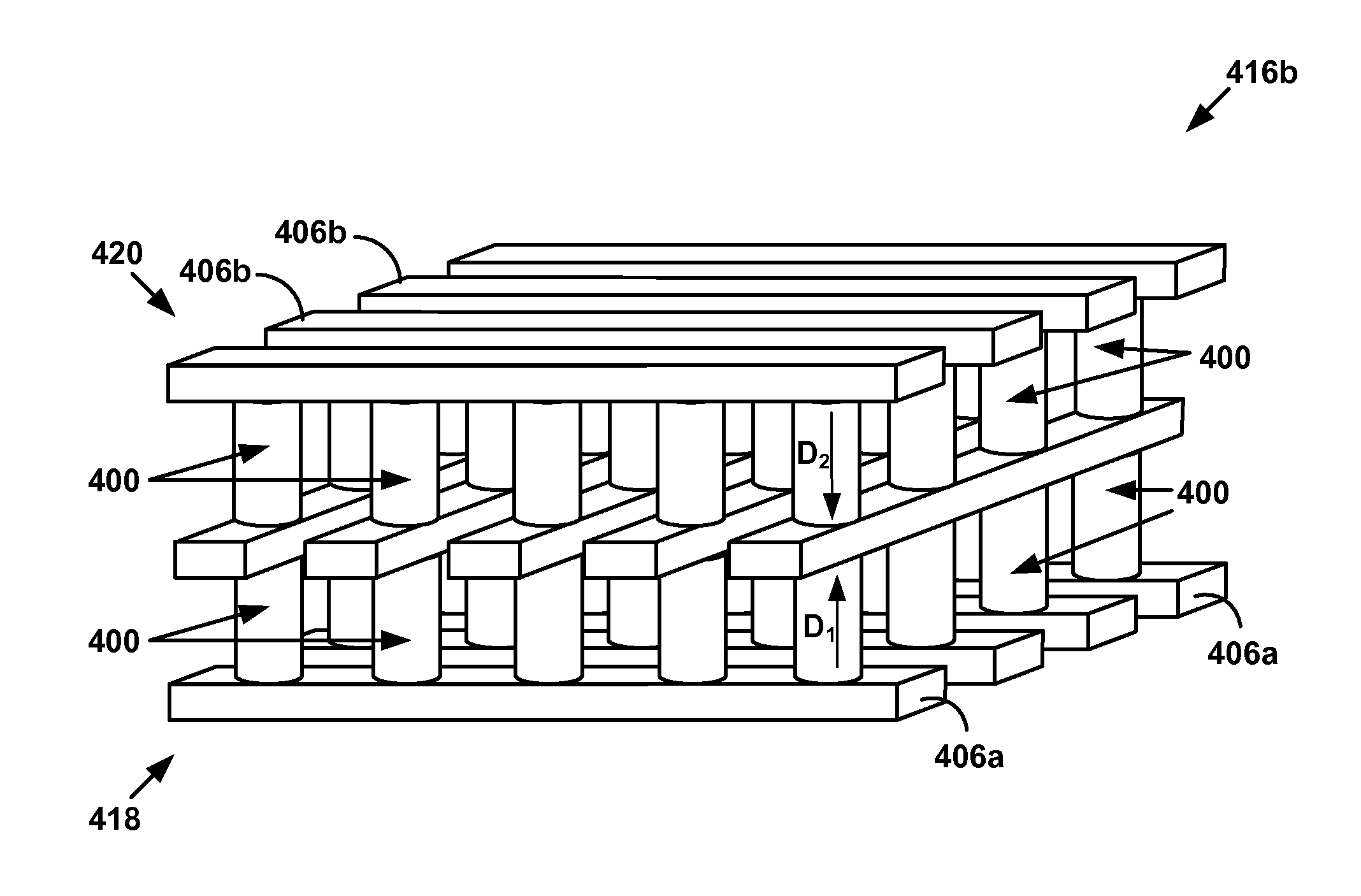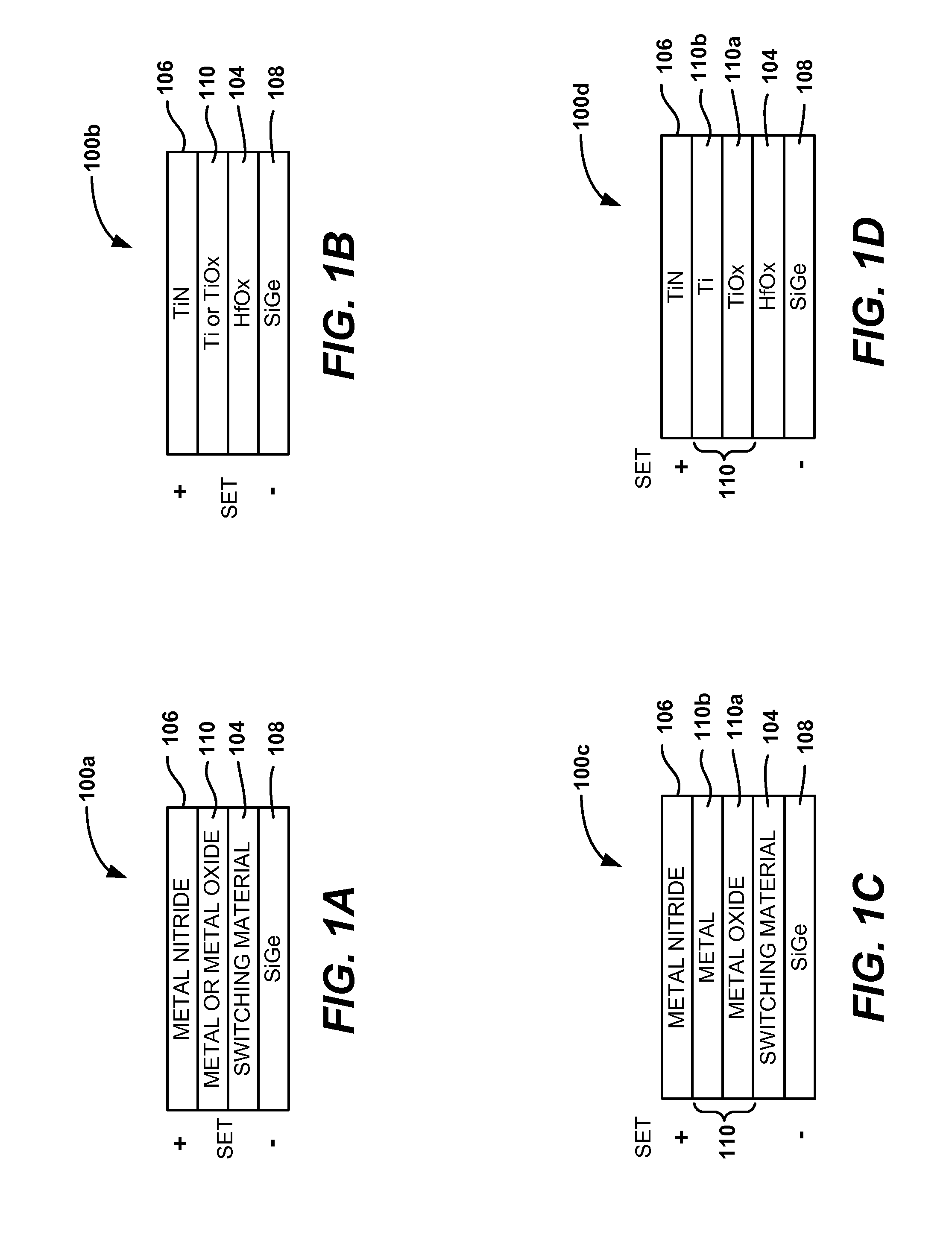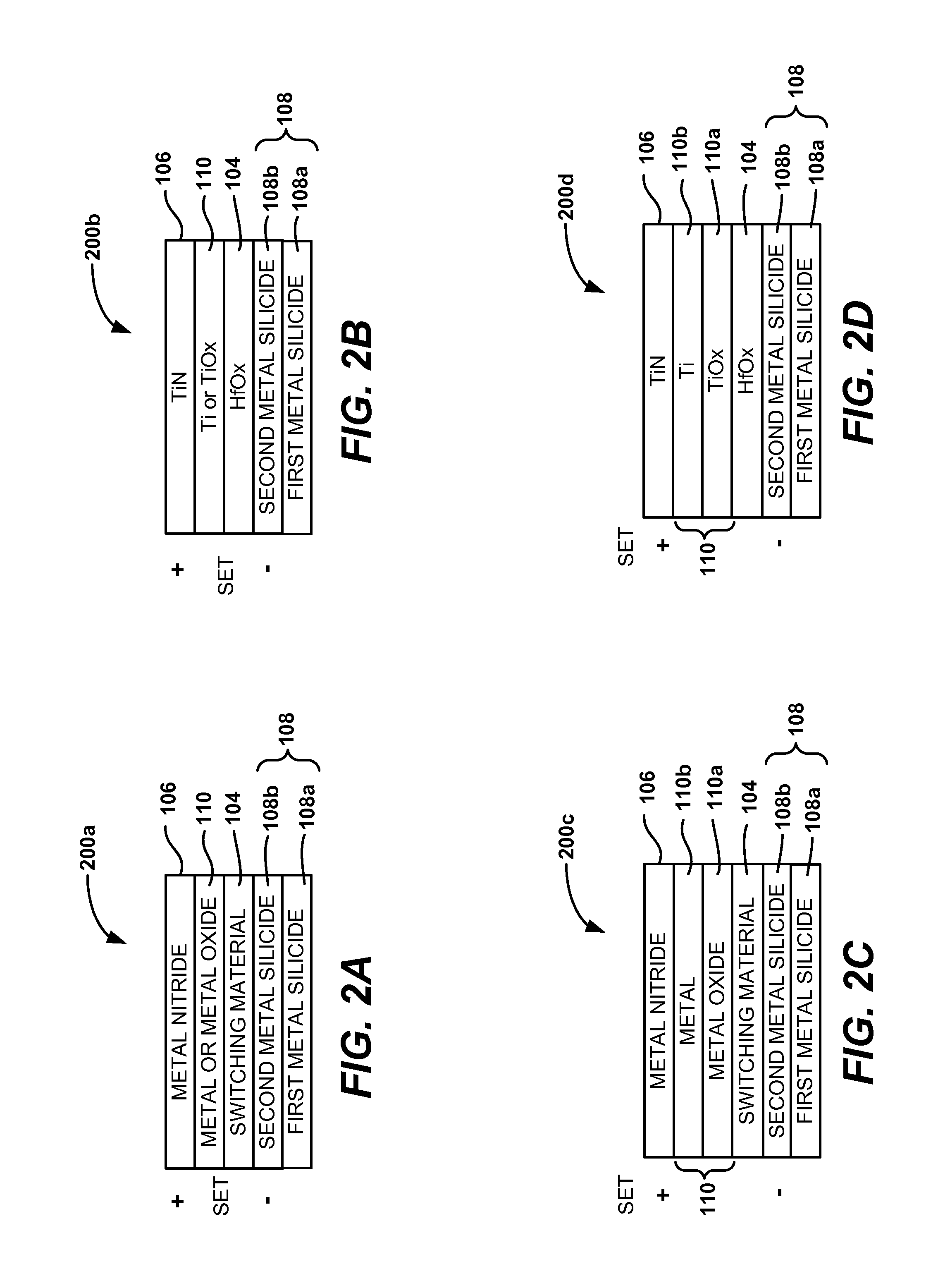Bottom electrodes for use with metal oxide resistivity switching layers
a resistivity switching and bottom electrode technology, applied in the field of memory arrays, can solve the problem of difficult fabrication of memory devices from metal oxide rewriteable resistivity switching materials with desirable switching characteristics
- Summary
- Abstract
- Description
- Claims
- Application Information
AI Technical Summary
Benefits of technology
Problems solved by technology
Method used
Image
Examples
Embodiment Construction
[0025]A metal-insulator-metal (MIM) stack formed from a reversible resistivity switching (RRS) material sandwiched between two metal or otherwise conducting layers may serve as a resistance-switching element for a memory cell. The two conducting layers may serve as the top and bottom electrodes of the resistance-switching element, and may be used to apply an electric field across the RRS material that changes the resistivity of the RRS material from a high value to a low value and vice versa.
[0026]In accordance with embodiments of the present invention, novel MIM stacks are provided that employ metal oxide resistivity-switching layers. Methods of forming such MIM stacks, as well as methods of employing such MIM stacks in three-dimensional (3D) memory arrays, are also provided.
[0027]These and other embodiments of the invention are described below with reference to FIGS. 1A-5H. For example, FIGS. 1A-1D illustrate MIM stacks that employ SiGe bottom electrodes. FIGS. 2A-2H illustrate MI...
PUM
 Login to View More
Login to View More Abstract
Description
Claims
Application Information
 Login to View More
Login to View More - R&D
- Intellectual Property
- Life Sciences
- Materials
- Tech Scout
- Unparalleled Data Quality
- Higher Quality Content
- 60% Fewer Hallucinations
Browse by: Latest US Patents, China's latest patents, Technical Efficacy Thesaurus, Application Domain, Technology Topic, Popular Technical Reports.
© 2025 PatSnap. All rights reserved.Legal|Privacy policy|Modern Slavery Act Transparency Statement|Sitemap|About US| Contact US: help@patsnap.com



